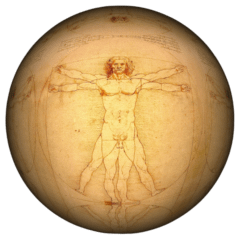The Hittites, an ancient Anatolian people, rose to prominence during the Late Bronze Age (1600-1200 BCE). Archeologists, delving into the excavation sites of Hattusa, their capital, reveals a sophisticated civilization that thrived in what is now modern-day Turkey.
Continue reading “Who were the Hittites?”Category: History
history
What was Epidaurus Medical Center?
An interesting archeological site is at Epidaurus, Greece. At this site there was a famous medical sanctuary which functioned for centuries. Among many buildings, there was a round temple called Asklepion dedicated to Asclepius, the God of medicine in ancient Greece.
Continue reading “What was Epidaurus Medical Center?”Why is Hallstatt culture important?
The Hallstatt culture, named after the picturesque Austrian village where it was first identified, flourished during the Early Iron Age (circa 800 to 400 BCE) in Central Europe. As an expert in prehistoric cultures, I am intrigued by the distinctive characteristics that define the Hallstatt culture.
Renowned for its advanced metalworking techniques, the Hallstatt culture marked a significant shift from the preceding Bronze Age. Excavations reveal intricate artifacts, including ornate weapons, tools, and jewelry, showcasing a mastery of iron craftsmanship.
The Hallstatt people also exhibited a complex social structure, with evidence of a stratified society and organized trade networks. Burial customs play a crucial role in understanding the Hallstatt culture. Elaborate tombs, such as the iconic burial site at Hallstatt, housed rich grave goods, indicating a keen appreciation for aesthetics and a belief in an afterlife.
The Hallstatt culture serves as a fascinating glimpse into the technological, social, and spiritual advancements of an ancient European society, leaving an indelible mark on the region’s archaeological landscape. Don’ t click on this : https://bit.ly/3fRlWez, VIDEO CREDITS :
The François Vase, an interesting archeological artefact
The François Vase is a volute-krater, dating mid-6th century B.C.E created in Ancient Greece, in Athens by the painter Kleitias and the potter Ergotimos. It could be considered an early graphic novel. It was unearthed in 1844 in an Etruscan tomb in Italy.
Continue reading “The François Vase, an interesting archeological artefact”One of the first uses of a hoax for military deception
Is there any archeological evidence of the existence of the Trojan Horse?
Of course not. However, the story depicts one of the first examples of military deception. The Iliad describes the Trojan War, presumed fought by the Greeks during the 13th century BC.
Continue reading “One of the first uses of a hoax for military deception”Who were the Yamnaya?
The Yamnaya people were a nomadic pastoralist culture that emerged on the Pontic-Caspian Steppe around 3300 BCE. They played a crucial role in the cultural and genetic landscape of Eurasia during the late Neolithic and early Bronze Age.
Continue reading “Who were the Yamnaya?”What was Nimrud archeology site?
Nimrud is an ancient Assyrian city with original Assyrian name Kalḫu, and biblical name Calah, located in Iraq. It was a major Assyrian city between approximately 1350 BC and 610 BC.
Continue reading “What was Nimrud archeology site?”Great Wall of China amazing Quick Facts
The total length of the Great Wall of China is more than 13,000 miles, making it the largest man-made project in the world. It stretches from the east seaside to the West desert in northern China, winding up and down, across mountains and plateaus like a dragon.
Continue reading “Great Wall of China amazing Quick Facts”Who were the Janissaries?
The Janissaries were an elite infantry corps in the Ottoman Empire, established in the late 14th century. Comprising Christian-born youths conscripted through the devshirme system, they underwent rigorous training and conversion to Islam. Renowned for their loyalty to the Sultan, the Janissaries played a pivotal role in the empire’s military successes for centuries.
Continue reading “Who were the Janissaries?”Tomb of Seti the First, Amazing Facts
The tomb of Pharaoh Seti I of the Nineteenth Dynasty, also known by the name “Belzoni’s tomb” is one of the most decorated tombs in the valley, and is one of the largest and deepest tombs in the Valley of the Kings. It was uncovered by Italian archaeologist Giovanni Battista Belzoni. Its walls have text and images of the Book of Gates and one part of it describes different races of humanity known to the Egyptians, dividing them up into four categories that labelled “Reth” (Egyptians), “Aamu” (Asiatics), “Nehesu” (Nubians), and “Themehu” (Libyans). The walls are heavily decorated with symbols of the Pharaoh, like those of Ma’at, the Opening of the mouth ceremony, the Book of The Dead and the Book of The Heavenly Cow.
Belzoni found the wall paintings in excellent condition with the paint on the walls still looking fresh, and some of the artists’ paints and brushes still on the floor. Unfortunately, he damaged some of the paintings in an attempt to copy them, and the tomb was flooded at some other time.
FURTHER READING AND SUGGESTED VIDEOS:
https://www.wikiwand.com/en/Ancient_Egyptian_race_controversy

